Sensor Sweep: Doc Savage, Machine Guns, Midnight’s War
Monday , 28, November 2022 Sensor Sweep Leave a commentComic Books (AIPT): Titan Comics and Heroic Signatures’ upcoming Conan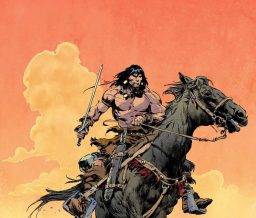 the Barbarian series is getting a Free Comic Book Day comic. Announced today, the FCBD edition will kick off the brand-new ongoing written by Jim Zub and will feature art by Roberto De La Torre and colorist José Villarrubia. Free Comic Book Day will take place on May 6, 2023.
the Barbarian series is getting a Free Comic Book Day comic. Announced today, the FCBD edition will kick off the brand-new ongoing written by Jim Zub and will feature art by Roberto De La Torre and colorist José Villarrubia. Free Comic Book Day will take place on May 6, 2023.
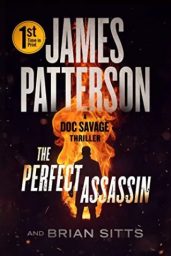 Doc Savage (Sprague de Camp Fan): The new Doc Savage “thriller” The Perfect Assassin by James Patterson and Brian Sitts just came out. It isn’t often that a book’s advertising copy invites a joke by providing such a straight line. I could mention a litany of bugaboos that I think made the novel go wrong but this novel wasn’t meant for guys like me. Guys who loved the original Doc Savage pulp adventures reprinted in the Bantam paperbacks.
Doc Savage (Sprague de Camp Fan): The new Doc Savage “thriller” The Perfect Assassin by James Patterson and Brian Sitts just came out. It isn’t often that a book’s advertising copy invites a joke by providing such a straight line. I could mention a litany of bugaboos that I think made the novel go wrong but this novel wasn’t meant for guys like me. Guys who loved the original Doc Savage pulp adventures reprinted in the Bantam paperbacks.
Firearms (Special Ops): Since the beginning of the Russian invasion on February 24th, Ukrainian armed forces have gotten a lot of new weaponry. Some of it was received as donations, much was purchased, and a good amount was captured. Today we will talk about the top five machine guns used by the Ukrainian Armed Forces. Note that we are only listing belt-fed general-purpose machine guns.
February 24th, Ukrainian armed forces have gotten a lot of new weaponry. Some of it was received as donations, much was purchased, and a good amount was captured. Today we will talk about the top five machine guns used by the Ukrainian Armed Forces. Note that we are only listing belt-fed general-purpose machine guns.
Authors (Wertzone): News has sadly broken that science fiction author Greg Bear has passed away at the age of 71, following a series of strokes. Born in 1951 in San Diego, California, Gregory Dale Bear studied writing at San Diego State University from 1968 to 1973. Remarkably, he sold his first science fiction short story, “Destroyers,” at the age of just 16. News has sadly broken.
Review (Gurney Journey): The title makes a provocative claim: The Future Is Analog. It’s an even bolder proposition than David Sax’s previous book The evenge of Analog. The new book, released tomorrow, suggests that the digital revolution hasn’t turned out the way most of us had hoped, and people want to return to reality.
D&D (Goodman Games): Poul Anderson was a prolific author who penned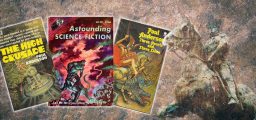 almost two hundred short stories and novels that ran the gamut from science fiction to fantasy to historical fiction to non-fiction during his lifetime. The seven-time Hugo Award winner was renowned for his exploration of politics and social issues in his stories, and for his larger-than-life heroes who seemed to fail as often as they succeeded. However, among gamers, Anderson is more wildly known for inspiring some of the foundations of Dungeons & Dragons.
almost two hundred short stories and novels that ran the gamut from science fiction to fantasy to historical fiction to non-fiction during his lifetime. The seven-time Hugo Award winner was renowned for his exploration of politics and social issues in his stories, and for his larger-than-life heroes who seemed to fail as often as they succeeded. However, among gamers, Anderson is more wildly known for inspiring some of the foundations of Dungeons & Dragons.
D&D (Monsters & Manuals): It had been a while since anyone had croaked, but last week saw the 20th PC death in my regular campaign. It hurt, too. Pandion, a Greek Magic-User we fondly envisaged as being played in the movie of the campaign by a late-middle aged Sean Connery, had navigated those difficult early spellcaster levels, and made his way up to level 5. His combination of Web, Fireball, Magic-Missile and ESP had become an important feature of the party’s dungeoneering arsenal, and it was always felt by the womenfolk of the campaign world in particular that beneath his salt-and-pepper good looks and suave charm his personality also had hidden, profound depth.
Cinema (Unz): The 2022 movie The Northman is a formidable Viking action film in which young Prince Amleth loses his kingdom when his uncle murders his father the king and then marries his mother the queen, so he vows vengeance. It’s like Hamlet, but with fewer soliloquies and more beheadings.
D&D (Walker’s Retreat): Don’t think so? You’re not watching the Pundit’s videos or reading the Comments therein, where he talk about Official D&D and how this is both internal company policy and it being done at the table by pozzed players- with Official Play at events and stores as the attack vector for having the former translate into the latter.
Warhammer (Grim Dark Magazine): Ciaphas Cain: Hero of the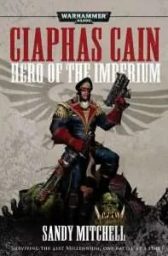 Imperium by Sandy Mitchell (pseudonym for Alexander Michael Stewart) is a collection of the first three short stories and first three novels featuring Commissar Ciaphas Cain as the main character. This collection was first published in 2007.
Imperium by Sandy Mitchell (pseudonym for Alexander Michael Stewart) is a collection of the first three short stories and first three novels featuring Commissar Ciaphas Cain as the main character. This collection was first published in 2007.
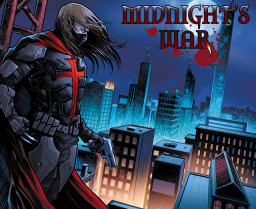 Games (Arkhaven Comics): I was curious to see what rules for vampirism he would invent when Midnight’s War first launched. In this case, it’s not the rules for vampirism that make these children of the night intriguing but the consistent and comprehensive world they inhabit. You would need a few things to make a modern Renaissance Era feudal system happen. First and foremost an exceptionally long-lived aristocracy. Men and women who started doing business like that when they were growing up in the 1300s.
Games (Arkhaven Comics): I was curious to see what rules for vampirism he would invent when Midnight’s War first launched. In this case, it’s not the rules for vampirism that make these children of the night intriguing but the consistent and comprehensive world they inhabit. You would need a few things to make a modern Renaissance Era feudal system happen. First and foremost an exceptionally long-lived aristocracy. Men and women who started doing business like that when they were growing up in the 1300s.
Tolkien (Tolkien & Fantasy): It is fairly well-known that Tolkien’s Hobbits were inspired by The Marvellous Land of Snergs, a 1927 children’s book by E.A. Wyke-Smith. Tolkien wrote in the notes for his lecture/essay “On Fairy-stories” that “I should like to record my own love and my children’s love of E. A. Wyke-Smith’s Marvellous Land of Snergs, at any rate of the snerg-element in that tale, and of Gorbo, the gem of dunderheads, jewel of a companion in an escapade.”
Review (With Both Hands): Remarkable stories clustered around the
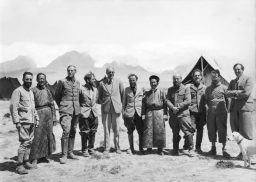
Gangtok, die Expeditionsmitglieder zu Gast bei Mr. Gould (zwischen Kala und Dochen)
Schäfer Expedition to Tibet of 1938-1939. The project was only one of several German expeditions to that part of the world at about the same time (the one that included Heinrich Harrer is perhaps the best known because of his memoir, Seven Years in Tibet), but the Schäfer Expedition had the backing of SS-Reichsführer Heinrich Himmler and of the Ahnenerbe, the research bureau reputed to be interested in the occult. Besides, it reached the then rarely visited holy city of Lhasa, and the Germans were known to have found favor with the ruling Regent.
Fandom (Tellers of Weird Tales): Writer, Editor, Publisher, Essayist, Book Reviewer, Bookseller, Collector, Fan Born June 2, 1920, Philadelphia, Pennsylvania Died October 8, 2022, Rockville, Maryland Robert A. Madle has died. For those not familiar with him, he was a science fiction fan, an essayist on and reviewer of science fiction, a writer of letters to science fiction and fantasy magazines, and a writer, editor, and publisher of science fiction. He did all of these things and more, everything that a fan of science fiction could do and might dream of doing.
Authors (DMR Books): Please introduce yourself and tell us about your ![]() background as a writer. My name is Chase A. Folmar, and I’m primarily a writer of Sword & Sorcery short stories and novellas, though I do dabble here and there in other speculative genres. S&S has really struck a chord with me in the past several years, however, because of its adjacency with horror, and how the fantastical elements within such stories are, more often than not, a source of sublime terror rather than awe.
background as a writer. My name is Chase A. Folmar, and I’m primarily a writer of Sword & Sorcery short stories and novellas, though I do dabble here and there in other speculative genres. S&S has really struck a chord with me in the past several years, however, because of its adjacency with horror, and how the fantastical elements within such stories are, more often than not, a source of sublime terror rather than awe.
Lovecraft (Tentaclii): Lovecraft derived his pseudonym ‘Lewis Theobald Jr.’, later ‘Grandpa Theobald’ and variants, from the pioneering but much put-upon Shakespeare scholar Lewis Theobald (1688-1744). I’ve now discovered a curious thing relating to this choice.
The discovery occurred this way. I was looking at the early medieval talking-fox cycle Reynard the Fox as a source for Tolkien.
Horror (Wormwoodiana): In October 1922, M.R. James published his only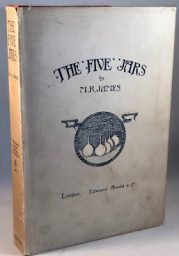 novel, a short (eight chapters) children’s fantasy in which a man, by applying ointment from five jars he finds in a metal box, gains certain perceptive abilities, and comes to see and communicate with animals and some previously-unseen small fairy beings. There are also some malevolent beings who seek to obtain the jars.
novel, a short (eight chapters) children’s fantasy in which a man, by applying ointment from five jars he finds in a metal box, gains certain perceptive abilities, and comes to see and communicate with animals and some previously-unseen small fairy beings. There are also some malevolent beings who seek to obtain the jars.
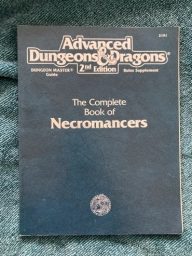 D&D (Skulls in the Stars): Keeping up my epic long-running series looking at classic Dungeons and Dragons of the TSR era! The Complete Book of Necromancers (1995), by Steve Kurtz. This one is a rarity, and relatively pricey! I finally sucked it up and ordered myself a copy.
D&D (Skulls in the Stars): Keeping up my epic long-running series looking at classic Dungeons and Dragons of the TSR era! The Complete Book of Necromancers (1995), by Steve Kurtz. This one is a rarity, and relatively pricey! I finally sucked it up and ordered myself a copy.
Pulp (Rough Edges): Carl Jacobi is best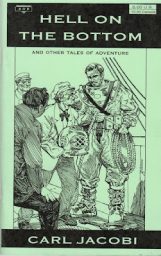 remembered as an author of weird fiction, of course, but he also wrote a lot of straight adventure yarns for the pulps. HELL ON THE BOTTOM is a 2001 chapbook from Black Dog Books that reprints two of those adventure stories and features the first-ever publication of another one that went unsold when Jacobi wrote it in the late Thirties.
remembered as an author of weird fiction, of course, but he also wrote a lot of straight adventure yarns for the pulps. HELL ON THE BOTTOM is a 2001 chapbook from Black Dog Books that reprints two of those adventure stories and features the first-ever publication of another one that went unsold when Jacobi wrote it in the late Thirties.
 Cinema (Guardian): Mean, moody and magnificent: film noir studio portraits – in pictures. Ava Gardner, Humphrey Bogart and Rita Hayworth were never more glamorous than in the photographs taken by studio photographers to publicise black and white thrillers in the 1940s and 50s. Here is a selection of the most memorable.
Cinema (Guardian): Mean, moody and magnificent: film noir studio portraits – in pictures. Ava Gardner, Humphrey Bogart and Rita Hayworth were never more glamorous than in the photographs taken by studio photographers to publicise black and white thrillers in the 1940s and 50s. Here is a selection of the most memorable.
Cinema (Neotextcorp): Boorman seemed to have left quite an impression on Bernard, for the latter offered him a script for a film called Point Blank and arranged a meeting between the director and Academy Award-winning actor Lee Marvin who was just filming The Dirty Dozen (1967) in London. The director disliked the screenplay written by Rafe and David Newhouse but was fascinated with its protagonist—and as it turned out, the popular actor shared the same sentiment and was impressed with Boorman’s ideas in regards to re-writing the script.
Fiction (Bloody Spicy Books): Charles Runyon is one of those authors I had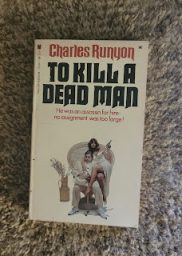 been meaning to read for, I don’t know, ten plus years. I never seemed to luck into any of his books but in the sphere of Gold Medal Paperbacks a lot of people praised his work, so I was always on the lookout. Luck struck at the local libraries book sale where I scooped up a lot of his Gold Medals and this Major release.
been meaning to read for, I don’t know, ten plus years. I never seemed to luck into any of his books but in the sphere of Gold Medal Paperbacks a lot of people praised his work, so I was always on the lookout. Luck struck at the local libraries book sale where I scooped up a lot of his Gold Medals and this Major release.
Cinema (Collection Reviewed): This suffers from 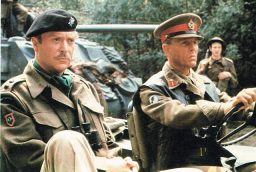 seventiesstaritis. In deliberate imitation of The Longest Day (1962), another film based on a book by Cornelius Ryan, Attenborough stuffed every role, big or small with some star. So we get James Caan as an American sergeant, Liv Ullman, and Lawrence Olivier as Dutch civilians, and Edward Fox and Michael Caine as British commanders. They’re actually all ok. Especially good are Anthony Hopkins as Lt. Col John Frost, Gene Hackman as Maj Gen Sosabowksi, and Dirk Bogarde as Lt Gen Browning.
seventiesstaritis. In deliberate imitation of The Longest Day (1962), another film based on a book by Cornelius Ryan, Attenborough stuffed every role, big or small with some star. So we get James Caan as an American sergeant, Liv Ullman, and Lawrence Olivier as Dutch civilians, and Edward Fox and Michael Caine as British commanders. They’re actually all ok. Especially good are Anthony Hopkins as Lt. Col John Frost, Gene Hackman as Maj Gen Sosabowksi, and Dirk Bogarde as Lt Gen Browning.
Western (Paperback Warrior): F.M. Parker (Fearl Parker) worked in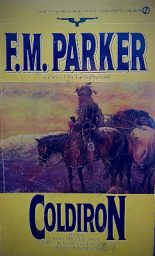 factories as a laborer, herded sheep, served as a bellhop, served in the Navy and is a Korean War vet. After earning a degree in geology, Parker went into mining, oil drilling, and a long career within the Bureau of Land Management. He became a full-time author, penning over 20 westerns beginning with his novel Skinner in 1981. New to his writing, I wanted to experience the author with one of his bestselling novels, Coldiron. It was originally published in 1984 and led to four subsequent novels starring the Luke Coldiron character. It remains available in ebook under the title Coldiron: Judge and Executioner.
factories as a laborer, herded sheep, served as a bellhop, served in the Navy and is a Korean War vet. After earning a degree in geology, Parker went into mining, oil drilling, and a long career within the Bureau of Land Management. He became a full-time author, penning over 20 westerns beginning with his novel Skinner in 1981. New to his writing, I wanted to experience the author with one of his bestselling novels, Coldiron. It was originally published in 1984 and led to four subsequent novels starring the Luke Coldiron character. It remains available in ebook under the title Coldiron: Judge and Executioner.
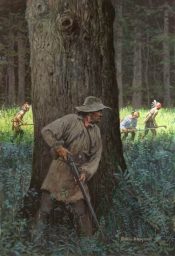 Firearms (Frontier Partisans): Well, not exactly. As we’ve noted before, rifles were not all that common on the frontier in the 1750s. White or Indian, a Frontier Partisan of that era was most likely going to be armed with a smoothbore military musket or a trade gun or fowling piece — although there are references to the use of “rifled guns” throughout the war.
Firearms (Frontier Partisans): Well, not exactly. As we’ve noted before, rifles were not all that common on the frontier in the 1750s. White or Indian, a Frontier Partisan of that era was most likely going to be armed with a smoothbore military musket or a trade gun or fowling piece — although there are references to the use of “rifled guns” throughout the war.
Outdoors (Art of Manliness): I am a big fan of the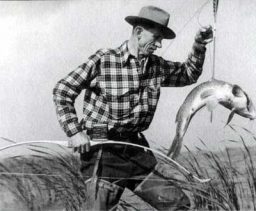 bow and arrow for a variety of reasons, and I personally think that anyone who has an interest in primitive survival skills or modern urban survival should seriously consider purchasing a good bow and arrow and become proficient in using it. There are hundreds of bows to choose from, but my particular bow of choice is an October Mountain Blue Ridge Hunter Take Down Recurve Bow. Below are six reasons why you should consider owning a similar survival take-down bow.
bow and arrow for a variety of reasons, and I personally think that anyone who has an interest in primitive survival skills or modern urban survival should seriously consider purchasing a good bow and arrow and become proficient in using it. There are hundreds of bows to choose from, but my particular bow of choice is an October Mountain Blue Ridge Hunter Take Down Recurve Bow. Below are six reasons why you should consider owning a similar survival take-down bow.
Please give us your valuable comment